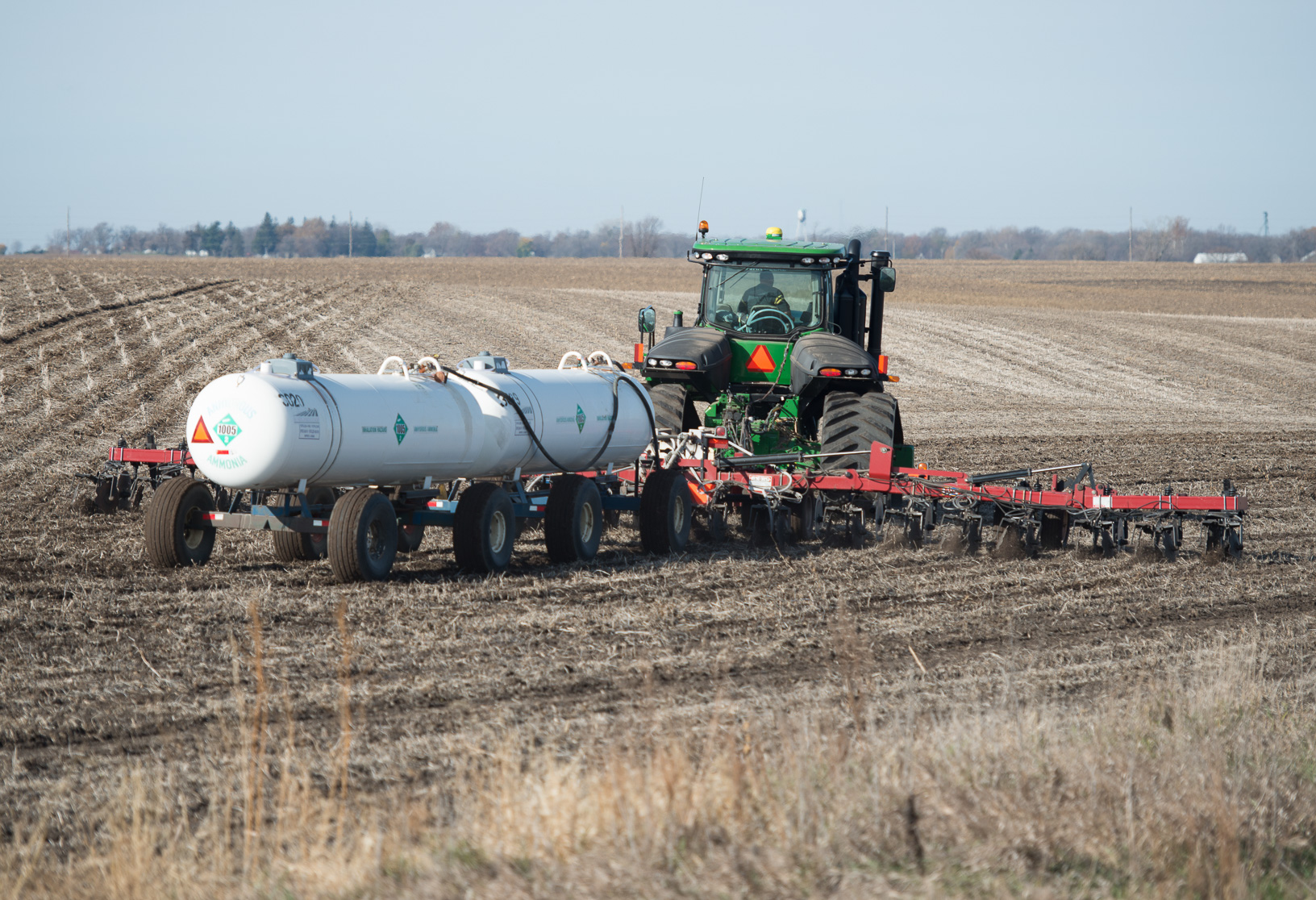
Iowa farmers could reduce input costs by evaluating nitrogen application rates, an ISA study shows. (Photo: Joseph L. Murphy/Iowa Soybean Association)
Reducing nitrogen applications could save farmers millions, study shows
February 20, 2020 | Bethany Baratta
Iowa farmers could save millions of dollars in input costs by reducing nitrogen applications to a rate suggested under the Iowa Nutrient Reduction Strategy, a recent study found.
The Iowa Soybean Association (ISA) completed the study with 20 Iowa farmers with support from the Walton Family Foundation, Environmental Defense Fund and Iowa-based Regional Strategic, LTD.
Completed during the 2018 cropping season, the study found that the overall nitrogen- per-acre target among the participants for corn following soybeans averaged 173.65 pounds of nitrogen per acre. This is 40.65 pounds per acre more than the Maximum Return to Nitrogen Rate (MRTN) limits included in the Iowa Nutrient Reduction Strategy and 33.65 pounds per acre over the current online MRTN calculator.
The overall nitrogen target rate for corn following corn among participants is 191.25 pounds of nitrogen per acre (1.25 pounds over the nutrient reduction strategy and 3.25 pounds over the current online calculator MRTN).
Based on the estimates in the Iowa Nutrient Reduction Strategy, there are 17.1 million acres of crops in a corn-soybean rotation and 3.9 million acres in a continuous corn rotation in Iowa. If half of the corn-soybean rotation is planted to corn in any year, reducing nitrogen application to the MRTN would save Iowa farmers between $59 million and $98.5 million based on assumptions about the nitrogen price, form, rate and acres applied.
ISA Director of Agronomy Scott Nelson said the study shows there is room for improvement when it comes to nitrogen use.
“Rates of application for nitrogen are important, both for optimizing farm input investments and for minimizing nitrate runoff into waterways,” Nelson said.
Nitrogen management
Reinbeck-area farmer Jack Boyer, a participant in the study, said he’s on the low end of nitrogen application.
He’s been a part of numerous trials through ISA and Practical Farmers of Iowa looking at the impact of reduced nitrogen rates and the addition of cover crops on his corn and soybean fields.
“I’ve been able to reduce my nitrogen inputs by 95 pounds per acre without a yield loss,” Boyer said. The reduction is significant, but since following Iowa State University guidelines regarding nitrogen use beginning in 2017, the reduction has been 45 pounds per acre.
Boyer said his use of cereal rye and rapeseed in his cover crop seedings have directly led to improved soil health, but not nitrogen fixation, and it could be a piece of the reduced requirement for additional nitrogen application.
“My speculation is that I’m feeding the biology and making nitrogen more available in the soil,” he said.
Useful tool
MyFarms developed a web interface for ISA for the Nitrogen Balance tool to analyze the difference between nitrogen inputs, like fertilizer or manure, and nitrogen outputs, such as nitrogen lost to the environment or grain leaving the farm.
The tool creates an easy-to-understand scorecard on how well nitrogen was managed, enabling farmers to make profitable refinements for next year’s production, Nelson said.
“If you’re overapplying nitrogen, the tool shows you opportunities where you can cut back and save some money,” Nelson said.
Members of the ISA research team can also provide guidance on over- or under-application, he said.
“For farmers, nitrogen is one of the top expenses on the farm, so they want to manage it wisely,” Nelson said.
If too much nitrogen is applied, there could also be an impact on water quality, Nelson said.
The ISA research team has been engaged in a variety of nitrogen studies looking at creating management zones for variable rate nitrogen and prescriptions for each zone.
Future implications
The Iowa Nutrient Reduction Strategy estimates the statewide nitrogen application rate to be 150 lbs. of nitrogen per acre. Reducing those nitrogen application rates to the MRTN levels mentioned above would generate approximately $18 to $19 million in statewide farm income.
Planting cover crops has been one way to keep nitrogen applications low while providing benefits to soil health, crops and water quality, Boyer said.
“If you have cover crops on the field, you aren’t letting the nitrogen leach away,” Boyer said.
“I’ve seen some real opportunity for reducing the amount of nitrogen applied on my farm, and I know other farmers could realize some of the same economic and agronomic benefits,” Boyer said.
Back